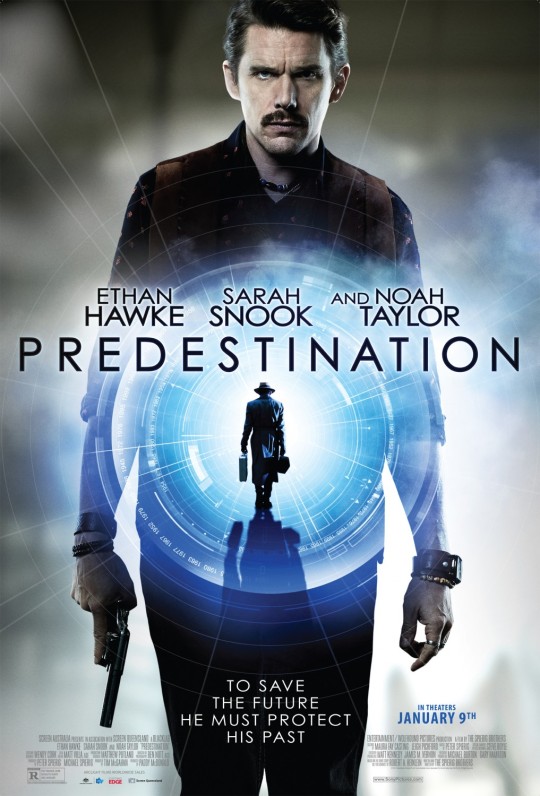
Andrew Scott stands out as an exceptional contemporary actor. From Sherlock to Fleabag to All of Us Strangers and Ripley, he mesmerizes audiences. His dark gaze can convey a lethal ferocity or an unearthly yearning, or — as seen in Ripley — a combination of both. It’s no surprise that Scott’s role in Blue Moon garnered him the Silver Bear for Best Supporting Performance at this year’s 75th Berlin International Film Festival. It’s unfortunate, however, that this recognition comes from a supporting character in Richard Linklater’s latest film.
Ethan Hawke stars in this tiresome biopic centered on American lyricist Lorenz Hart, having previously garnered acclaim from critics for his roles in Linklater’s films, including the Before trilogy (Before Sunrise, Before Sunset, and Before Midnight) and Boyhood. Perhaps Hawke merits acknowledgment for undertaking the role of Hart, as this portrayal diverges significantly from the cool yet flawed characters he usually embodies, standing in stark contrast. Crafted by Robert Kaplow, the same novelist behind Me and Orson Welles, which Linklater adapted in 2008, Blue Moon saturates itself with sentimental regret over this overlooked artist, but it ultimately lacks substance.
While Scott’s depiction as Hart’s collaborator, composer Richard Rodgers, is enthralling in both intensity and genuineness, Hawke’s portrayal seems farcical, trivializing a musical genius who was hopelessly burdened by his own vulnerabilities.
Blue Moon resembles a clumsy take on a solo off-off-off Broadway performance.
The bulk of the film unfolds on March 31, 1943, during the premiere of Rodgers and Hammerstein’s Oklahoma! on Broadway. Hart, a middle-aged man with a comb-over that has seen better days, sulks in the box seats as joyful cowboys and farm girls perform. As the audience erupts into applause, he departs prematurely, eager to reach Sardi’s, the famous bar where the afterparty awaits.
There, Larry (his usual address) longs to reconnect with Rodgers, his collaborator for 25 years, during which they crafted beloved songs such as “The Lady Is a Tramp,” “My Funny Valentine,” and, of course, “Blue Moon.” Yet, witnessing the audience’s adoration for Oklahoma! (“with an exclamation point,” he ruefully notes) makes him acutely aware that this could signal the end of his partnership with Rodgers, especially as Hammerstein’s lyrics are receiving extensive acclaim.
Before establishing this setup, Kaplow begins the film with Hart’s demise. Intoxicated, soaked, and fading in a dark, rainy alley in New York City, Hart collapses next to a dumpster, a tragic figure in solitude. This grim image looms over the entire film like a dark cloud, making it challenging to appreciate the humor in Hart’s desperate efforts for charm and conversation.
In a tedious first act, he engages in tedious dialogue with a worn-out bartender (Bobby Cannavale), an enthusiastic pianist (Jonah Lees), and a tolerant patron (Patrick Kennedy). Kaplow includes biographical details within these interactions, so minimal prior knowledge about Hart isn’t a barrier. However, despite all this information, Blue Moon focuses on three main aspects: Hart was inebriated, homosexual, and diminutive.
Ethan Hawke and Richard Linklater turn Lorenz Hart into a comical figure.
While historians now recognize Hart as queer, he wasn’t open about his sexual identity during his life. Yet, Kaplow portrays him tossing around gay jokes laden with slurs and unabashedly labeling himself a “cocksucker” to the shocked straight bartender. When questioned about his attractions, Larry claims that as a lyricist, he’s “omnisexual,” drawn to the beauty in men, women, and horses for his artistry. This brings us to 2025, where homosexuality and bestiality are carelessly conflated in a film intended to revitalize a troubled artist, showcasing his suffering and brilliance.
Like Linklater did with Jack Black in Bernie, he selects a straight American actor to portray a gay antihero, resulting in a caricature that lacks subtlety, unmarred by any artwork within Sardi’s. Even prior to Larry’s drinking, Hawke embraces an exaggerated energy that borders on absurdity. His performance caters to the cheap seats, with raised eyebrows and an incessantly winking demeanor more appropriate for Hollywood Squares. Heightening the ridiculousness are the extremes to which Linklater goes to convey Hart’s short stature of at most 5 feet.
The Sardi’s set is designed such that Cannavale completely overshadows Hawke, who, at 5 feet 10 inches, appears dwarfed by the surrounding furniture. While seated at the bar, he struggles to reach the ledge for a shot glass. Wider shots amplify the absurdity, evoking the lengths Peter Jackson took to portray hobbits convincingly small beside Gandalf. Perhaps this